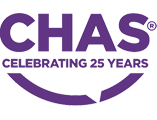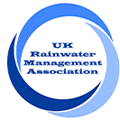Why is rainwater harvesting needed
04/01/2024

04/01/2024
Rainwater harvesting is widely recognised as a solution to help tackle the UK’s growing water crisis. Unlike other water-saving fixtures and fittings, such as dual flush toilets, rainwater harvesting mitigates the need for building users to change their water consumption habits. Rainwater harvesting can simply replace the mains water supply with a sustainable supply of recycled rainwater for many non-potable uses within a property. Mains water is treated to drinking water quality and this high standard of water is not required for toilet flushing, manufacturing, and irrigation purposes. This makes rainwater harvesting ideal for reducing water consumption!
The built environment sector is seeing more requirements for water management than ever before. In some areas like West Sussex, water neutrality restrictions have been placed on all new developments within the region to prevent excess mains water use. Water neutrality is essentially ensuring that the new development is not using any more mains water than the previous use of the site. Think of it like this, a developer who is looking to build a brand-new retirement village in two existing fields is not permitted to use any more mains water than the fields would have used. This means that the developer must ensure the retirement village offsets practically all of their water demand. Rainwater harvesting or greywater recycling will be the only way of realistically achieving these savings.
As well as initiatives to prevent the worsening of water scarcity, other legislation around the management of stormwater are set to be introduced in England in 2024. The introduction of Schedule three amendments to the Flood Act will see the mandatory use of sustainable drainage systems on all new developments in England. Rainwater harvesting is the best way to manage stormwater runoff from a site as it captures and holds the rainwater on-site to be reused rather than going into external storm drains.
Some have compared attenuation and rainwater harvesting based on existing knowledge. They say that attenuation is designed to be empty for an incoming storm to ensure that 100% capacity is always available; whereas rainwater harvesting storage needs to be full all the time so that the rainwater can be reused within the building. Whilst this may have been the case a decade ago, the industry has new technologies to ensure that combined attenuation and rainwater harvesting can reduce the volume of stormwater entering external drains. Active Attenuation monitors weather patterns to ensure there is always a safe level of attenuation capacity available meaning that the stormwater runoff can be reused within the building. Active Attenuation will only release excess capacity into external drains at a time when there is no storm and reduced pressure on the network.
Schedule three has been in place in Wales since 2019 and many developers will still rely on attenuation crates as there is a lack of awareness around Active Attenuation technologies. Now is the time to start tackling water management issues and water scarcity through a combined approach to rainwater harvesting and attenuation.
Much-needed capacity within the combined sewer network is needed to reduce the frequency of CSOs or combined sewer overflows. CSOs occur when the network is overwhelmed and water companies are forced to release untreated sewage into a nearby river or sea to prevent the network from backing up.
Typically, high water uses have enjoyed discounts on their water bills by purchasing water in ‘bulk’. However, the water scarcity issue is so large within the UK that many water companies are ending these discounts. For high water users, this is a problem because the cost of their water bills may skyrocket. It is also important for non-domestic customers to remember that water companies have no legal obligation to provide a water supply to their needs. In the future, this could result in water companies having the power to restrict supplies; therefore, it is in a business’s best interest to use water wisely.
As part of schedule three changes, developers will be required to submit detailed drainage information as part of the planning application. Stormsaver can assist developers with estimated water savings made by a rainwater harvesting system which can be included in the planning application. The same applies to water neutrality regions; we can assist with water saving figures.
Stormsaver are uniquely placed within the industry as one of the only rainwater harvesting experts who can size a system according to ‘the detailed approach’ in the British Standard BS 16941 for rainwater harvesting. This is the best way of sizing a rainwater harvesting system as we can propose the most efficient system for the smallest size tank available. Essentially, system efficiency refers to the percentage of time the system is relying on rainwater to meet the total non-potable demand within the building. Getting the smallest size tank available is also beneficial for on-site space requirements to reduce project costs. From this, we can also predict water and financial savings of a rainwater harvesting system.
The best time to install a rainwater harvesting system is at the new build stage. This is because we can collect from as much roof area as possible and provide a sustainable water supply to all non-potable outlets. Whilst retrofitting is not impossible, it is more expensive for the end user and it is not always possible to divert all drainage and pipework into a central rainwater harvesting system.
Despite this, the rainwater harvesting industry is still experiencing many projects where the technology is value engineered out of the specification. Stormsaver experience many projects where rainwater harvesting is value engineered out and then the end user of the building contacts us later for a retrofit system. If a client is considering removing rainwater harvesting from the specification, talk to us. We can help educate on the importance of reducing water consumption and could look at cheaper methods for achieving rainwater harvesting at the site.
Some developments have ‘tick box’ rainwater harvesting systems where the smallest size rainwater harvesting system possible has been installed to achieve a sustainable rating. Often these buildings have a high water usage but only have a 5,000 litre below ground storage tank which is totally insufficient to cover the building demand. These systems are sometimes only connected to two toilets and the remaining 30 toilets within the building are using mains water. ‘Tick box’ rainwater harvesting systems create many headaches for end users who care about meeting ESG targets but have an insufficient system which is not saving much water for their site. End users with these systems often ask if the tank size can be increased in any way but this is often not possible.
Interested in learning more about the benefits of installing rainwater harvesting on your project? Talk to us here today.

My role as a Water Reuse Specialist means I get to keep up to date with all things water conservation. My favourite water saving tip is to turn taps off when brushing your teeth! I think rainwater harvesting and the water reuse industry is exciting, and I love sharing updates with our customers. View Matt’s Stormsaver profile here.
Privacy Policy Cookie Policy Site Map
Copyright © 2025 Stormsaver Ltd. All Rights Reserved.






